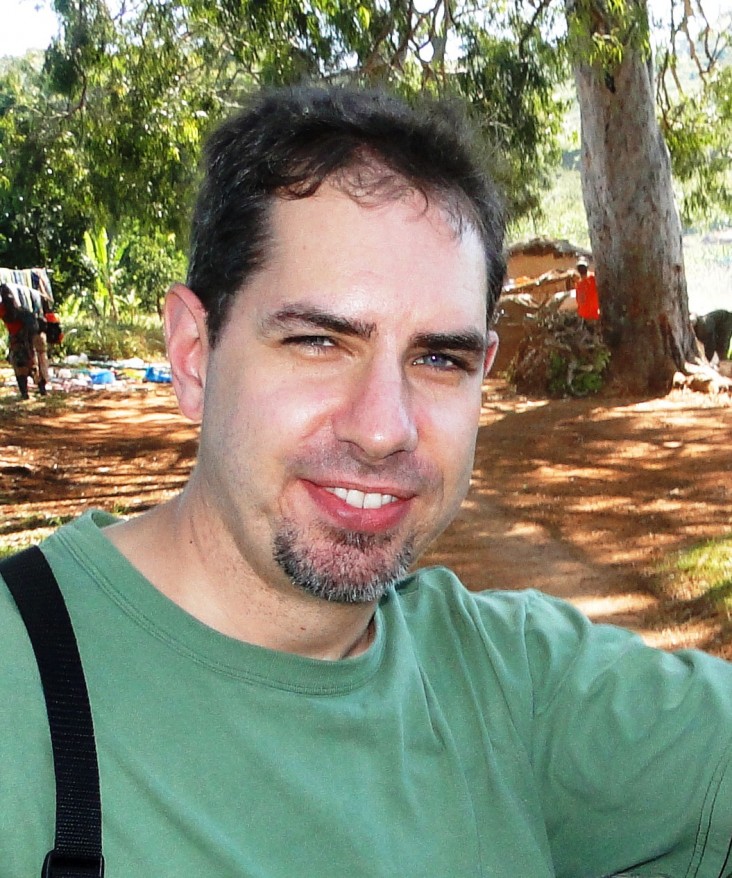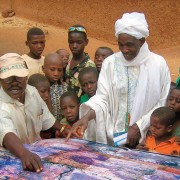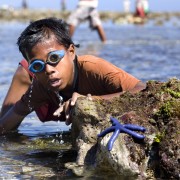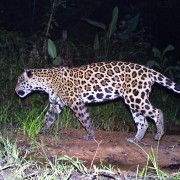By dedicating this issue to the topic of resource depletion, FrontLines has provided an opportunity to highlight USAID’s long-standing and sizable investment in biodiversity conservation and sustainable management of natural resources. We take a number of different approaches to this complex topic, but there is one common goal: to conserve nature by helping people value, sustain and benefit from it. Over years of work in this sector, USAID has been a leader in elevating biodiversity conservation as an essential part of international development.
Unfortunately, decades of short-term thinking has left a legacy of development built on ecosystem degradation and rapid biodiversity loss, putting national and global development gains and goals at risk. Biodiversity, including individual species and ecological communities, is now widely recognized as a critical foundation of human welfare. Healthy ecosystems support thriving businesses and help keep the rural poor from slipping into extreme poverty. In addition, the process of conserving or restoring biodiversity has demonstrably improved livelihoods, food security and resource rights for millions more.
Recognizing these relationships, USAID has allocated about $200 million towards biodiversity conservation in each of the last several years. Our programs advance people-centered conservation approaches that secure species and ecosystems while contributing to truly sustainable development.
What’s It Worth?
Functioning natural ecosystems directly provide food, fiber and fuel as well as services like water regulation, crop pollination, climate change mitigation and disaster risk reduction.
Forests and fisheries are among the most valued biological resources, with at least 1.6 billion people relying on forests for some part of their livelihood and about 2.6 billion people in developing countries dependent on wild fisheries for protein and income. The value of these resources is clear, but too often they are taken for granted: The 2013 U.N. Millennium Development Goals Report confirms that both forests and fisheries are not well-managed enough to meet demand in the long term.
In an increasingly urbanized world, wilderness has recreational, cultural, spiritual and intrinsic value. And for rural people dependent on nature as their market, pharmacy and insurance in lean times, biodiversity loss and ecosystem degradation have immediate consequences.
Farmers, fishers and hunters have to go farther and work harder just to keep their low standard of living, until these traditional livelihoods become completely untenable. Those who cannot move or adapt are worse off than their parents’ generation.
Likewise, our global natural heritage and the opportunity for a species or ecosystem to benefit humanity are diminished by every piece of nature lost.
Wildlife in Crisis
Over the past 50 years, humans have altered ecosystems at a greater rate and more extensively than at any comparable period of time in the history of mankind. Overexploitation of individual species; habitat conversion, fragmentation and degradation; invasive species; and climate change have accelerated the rate of biodiversity loss from a few species to an estimated 1,000 species each year.
While most of these extinctions are insects, plants and marine organisms barely known to science or not yet discovered, a host of charismatic and commercially important species in the metaphorical emergency room are a rallying point for action, from rhinos and tigers to rosewood and tuna.
The world is losing species at 100 to 1,000 times the natural extinction rate, leading many scientists to believe we are in the midst of the sixth great extinction event. One major cause of extinction is overexploitation—the unsustainable use of wildlife, timber and fish.
In Central Africa, poaching for ivory has decimated forest elephant numbers by 62 percent in the last decade. Globally, illegal logging—worth $30 billion to $100 billion per year—is making rare hardwoods rarer and opening up forests to unsustainable agriculture and hunting.
The world’s oceans are also hard hit, with approximately one-quarter of commercially exploited fish stocks overharvested because of unsustainable and illicit practices, including 100 million sharks killed annually.
President Barack Obama recently raised the profile of this crisis in Tanzania, where on July 1 he announced an Executive Order on Combating Wildlife Trafficking, establishing an interagency task force to develop and implement a national strategy on wildlife crime at home and abroad. The Executive Order articulates how wildlife trafficking is not only bad for particular species, but also how illegal trade in terrestrial and marine animals is a threat to the safety of communities and the security of nations, with known connections to organized crime, terrorism and disease outbreaks.
USAID is playing a key role in the task force, applying our experience and expertise working with park guards, customs officers, the judiciary and the media in dozens of countries to address poaching of, trafficking in, and demand for wildlife products. From the comprehensive approach to wildlife trafficking of our flagship ARREST (Asia’s Regional Response to Endangered Species Trafficking) program in Southeast Asia, to dozens of others that address poaching as part of a broader conservation strategy (see article on protecting saiga antelope in this issue), our Agency manages the majority of U.S. funding on this issue.
The national strategy is expected to be finalized and implementation started in early 2014—and USAID is hitting the ground running with new programs to assess and respond to transnational wildlife trafficking, bolster anti-poaching in hard-hit countries, and incentivize creative solutions from people outside the conservation community.
Leading by Learning
USAID’s approach to conservation has evolved since the 1980s from programs focused on managing protected areas to ones that conserve biodiversity across large landscapes and seascapes with a full range of government, community and private sector partners. By conserving high biodiversity areas and integrating our work with other sectors, such as economic growth and agriculture, our programs secure ecosystem goods and services essential for development at the local and national levels.
We have pioneered and refined many foundational approaches to biodiversity conservation over the years including community-based natural resource management, rights-based fisheries management, private-sector partnerships and transboundary regional initiatives.
Stories in this issue highlight many of these approaches, from USAID’s major support for the Coral Triangle Initiative and its success advancing economic growth, food security and governance in seven countries, to an activity in eastern Colombia that is helping ranchers and jaguars co-exist.
They illustrate many of the conservation approaches and world-class expertise USAID brings to bear on the world’s major biodiversity—and development—challenges.













Comment
Make a general inquiry or suggest an improvement.